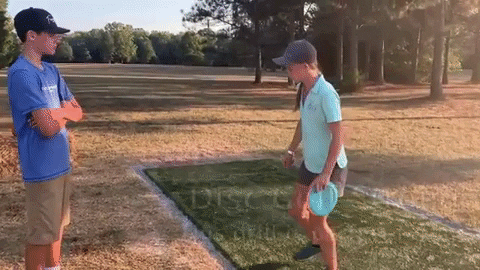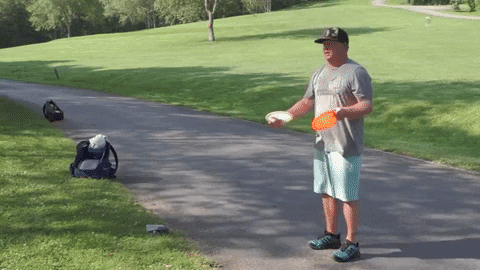disc-golf-neil
Birdie Member
- Joined
- Oct 10, 2023
- Messages
- 481
At 23:40
Aaron Gossage is talking about how the tee pad is slippery and then makes an interesting comment about Jacob, "I have never seen someone's form like that, but the guy does not slip, he doesn't push off that front foot, he just rotates on it."
Unfortunately this specific shot somewhat blocks the feet but you can see better views elsewhere in the vid.
18:46 has a better view of the feet:
How true is Aaron's analysis? It seems hard to believe Jacob wouldn't tumble forward more after the brace if he wasn't pushing off it to stop the forward momentum (of course he must be a little bit). Is this mostly a case of vertical / horizontal bracing style? At first it looks like he's going into the brace fairly horizontally but looking more closely it does kind of seem the plant lands without a lot of horizontal force at the end.
There were also lots of commentary about his power / arm speed, being a shorter guy his power impressive (>700 ft Jerm says but idk which vid). It looks like a whippy reachback / pullthrough style so I'm curious to see what people here think about this form. I searched but it seemed like all old posts.
Aaron Gossage is talking about how the tee pad is slippery and then makes an interesting comment about Jacob, "I have never seen someone's form like that, but the guy does not slip, he doesn't push off that front foot, he just rotates on it."
Unfortunately this specific shot somewhat blocks the feet but you can see better views elsewhere in the vid.
18:46 has a better view of the feet:
How true is Aaron's analysis? It seems hard to believe Jacob wouldn't tumble forward more after the brace if he wasn't pushing off it to stop the forward momentum (of course he must be a little bit). Is this mostly a case of vertical / horizontal bracing style? At first it looks like he's going into the brace fairly horizontally but looking more closely it does kind of seem the plant lands without a lot of horizontal force at the end.
There were also lots of commentary about his power / arm speed, being a shorter guy his power impressive (>700 ft Jerm says but idk which vid). It looks like a whippy reachback / pullthrough style so I'm curious to see what people here think about this form. I searched but it seemed like all old posts.
Last edited:






